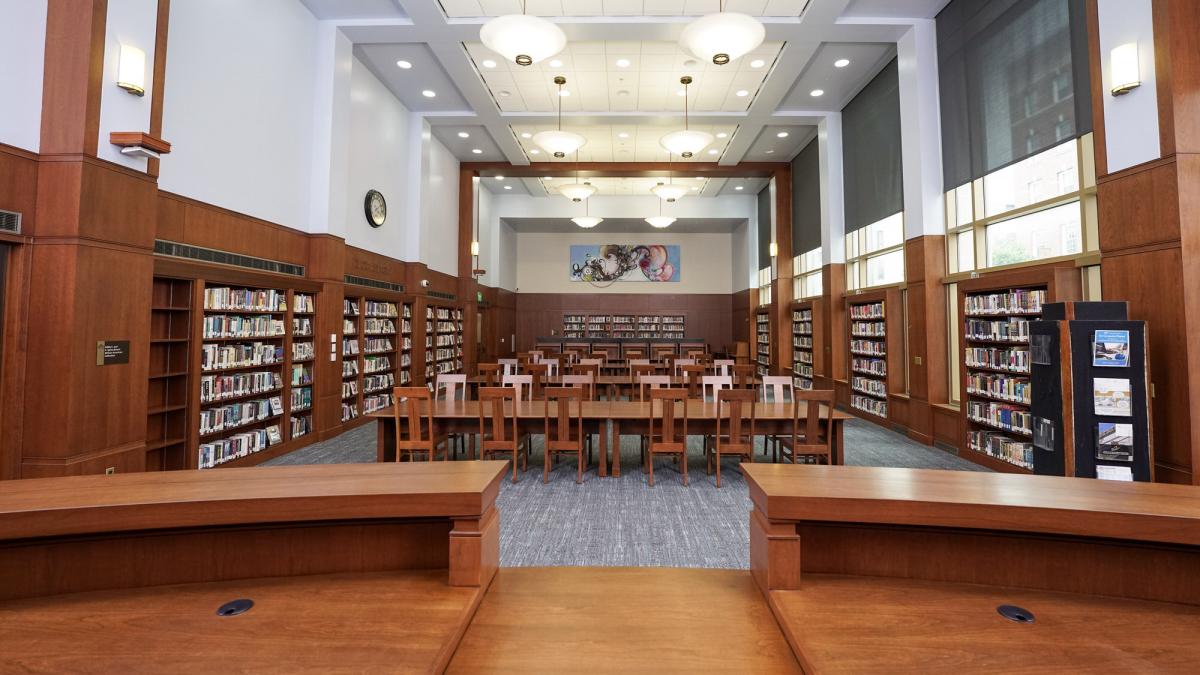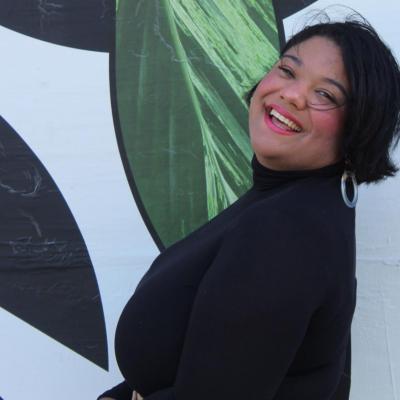
When Vivian Fisher was hired as its first manager in August of 2000, the Enoch Pratt Free Library’s Eddie and Sylvia Brown African American Department didn’t exist.
“There was no building,” recalls Fisher, now the Central Library’s deputy chief, who also formerly served as the head of Morgan State University’s Special Collections. “It was a parking lot, and it was my job to turn it into a full-fledged department.”
Three years later, the Cathedral Street landmark unveiled a multi-million dollar annex that housed the brand new department and its reading room, named after philanthropist Juanita C. Burns.
Today, the Central Library department that Fisher has overseen for more than two decades—born as an extension of the library’s more than 50-year-old African American collection—is a hallmark of the entire Pratt Library system, boasting more than 50,000 materials dedicated to the history and culture of Black Baltimore.
This Friday from 7-9 p.m., the department will celebrate 20 years of service with a special conversation between Enoch Pratt CEO Heidi Daniel and her predecessor, Librarian of Congress Dr. Carla Hayden—whose presence was essential to establishing the Pratt’s African American collection throughout the years. The evening at the Central branch in Mt. Vernon will also highlight a ribbon cutting unveiling upgrades to the space (expect fresh paint, carpeting, and furniture,) as well as the dedication of new artwork courtesy of social activist and visual artist Chris Wilson.
With the assistance of both city and state funds, Fisher believes that the library’s African American collection began in 1977, at the tail end of the Civil Rights Movement and the crux of Black Power movement. “At the time, many African American students were really embracing their ancestry,” Fisher says. “and a lot of them, at very prominent universities, were demanding that African American history courses be taught.”
What started as a section with 15,000 titles now includes close to 60,000 materials that span far beyond books—including newspaper clippings, a black-and-white photography collection centering Black Marylanders, and an ephemera collection stocked with everything from calendars to pamphlets to church and funeral programs. Notably, the department is also home to first editions including Phillis Wheatley’s Poems on Various Subjects, Religious and Moral and William Still’s The Underground Railroad.
The decision to expand on these resources with non-book materials throughout the years was largely thanks to Dr. Hayden’s guidance, according to Fisher.
“This was something that was near and dear to her heart to get accomplished—not only for her, but for the citizens of Baltimore,” Fisher says of Hayden, who was with the Pratt from 1993 to 2016. “If it wasn’t for her, I don’t know if the department would have been a reality.”
Under Fisher’s loving leadership, the department—which is, of course, named after active Baltimore philanthropists Eddie and Sylvia Brown and funded in part by private donors—has also introduced regular programming aimed at uplifting Baltimore’s Black population. In honor of its namesakes (both beloved Pratt supporters), Fisher launched the library’s popular Brown Lecture Series in 2004—which has since welcomed guests such as R&B singer-songwriter Aaron Neville, American Ballet Theater’s first African American principal ballerina Misty Copeland, and, most recently, hometown actress Jada Pinkett Smith.
“I wanted to honor [the Brown family] and have scholars, researchers, and writers talk about the African American experience, so that people like me get to see people who have made it in their own professions,” Fisher says of the series. “I wanted people to come out to see that there’s a world full of possibilities. The African American Department offers a lot of possibilities.”
Fisher hints at additional programming in the works such as a lyricist contest for local students and a November 30 panel discussion featuring Baltimore-bred artists Derrick Adams and Shinique Smith.
In the next 20 years, she hopes the department will continue to receive funding to add to its collections and programming—which serve the overarching goal of sharing the city’s Black history.
“I want people to be able to take away that there was a race of people whose trajectory was looking very grim,” she says. “But there’s a lesson here not to despair. You can be as great as you want to be. Looking at some of the stuff that we have is a motivation for a lot of people. If those are the odds that they had against them, and they were able to succeed, there’s nothing there to stop you.”
